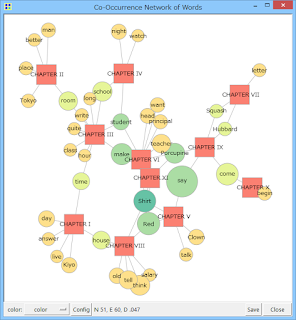Statistics and Graphical Models in Data Science
Statistics:
For any
aspiring data scientist, I would highly recommend learning statistics with a heavy focus
on coding up examples, preferably in Python or R.
Mostly favorite series is the Statistical
Learning series. The SL Series is a great primer on statistical modeling / machine
learning with applications in R.(Reference by qoura.com)
·
Crucial component:
Statistics is a crucial component of data science. At Twitch,
The Professional data science team brings together three things: the first is statistics,
second is programming, and third last is product knowledge. And we would
never hire someone who wasn’t strong in stats. You can be a great programmer,
but if you don’t know what Byes Rule is, then we have an engineering department
I can point you to.”
The origin in statistics is mostly undeniable.
·
Programming:
Python: Python is a mostly
used high-level programming language used for general-purpose
programming the it is created by Guido van Rossum and the first
version is released in 1991. Python has
a design philosophy which mostly emphasizes on code readability (notably
using whitespace indentation to delimit code blocks rather
than curly braces or keywords), and also a syntax which allows programmers to
express concepts in very few lines of code than possible in languages
such as C sharp , C++ or Java (script language). The language
provides constructs intended to enable writing clear programs on both
a small and large scale.
R-Learning: R is also open programming
language and amazing software
environment for statistical
computing and graphics. R is
supported by the R Foundation for Statistical Computing. The R language is mostly used between statisticians and data
miners for developing statistical software and data analysis. In open Polls, surveys of data miners, and studies of
scholarly literature databases show that R's popularity has increased
substantially in recent years than others languages such as Python.
Graphical models and Network:
Graphical
ways and instruments can be a powerful
way to understand complex and difficult information and facilitate statistical
computations and shows better and fair results. They are an important concept
which play a role in helping us uncover patterns, function and our behavior
inherent in networks of information, be it gene regulatory networks or mostly social networks. Data scientists must
learn methods for analyzing such networks, which begins with learning how to
represent their system as a graph and includes analysis such as centrality
measures, influence maximization, and using interference to gain insight on
different graphical models. This helps them to find the local interactions that
are amazing points of large-scale
network effects – the kind that businesses care about.
The case studies included in this course
span all of these areas such as implementing different types of regression to
visualize the gender wage gap and playing with deep neural networks to
understand how they make decisions. Such case studies can be invaluable in
helping data scientists understand how they can put what they learn to use in
their own organizations.
A recent Gartner survey found
only 41% of IT professionals thought their organizations were ready for the
demands of digital business over the next two years, meaning 59% admitted they
were not prepared. Don’t let yours be one of them: get your staff some
effective training in the data science disciplines that the big data era
requires.(full references by: Wikipedia)



Comments
Post a Comment